This is the time of year which is the most exciting in the garden. After a cold winter we wait with bated breath to see what has survived and even will thrive. I note some Rhododendrons seem to have smaller flowers and the Tulips are finally beginning to show their buds. One plant I associate with spring is Mahonia aquifolium (Oregon Grape) which is bursting forth with its bright fragrant flowers.

The Oregon Grape(Mahonia aquifolium) here is a welcome addition to this spring garden of mixed bulbs and native plants.
Oregon Grape is a shrub which is from the west coast of British Columbia south into northern California west of the Cascade Mountains where this plant is generally found as an understory plant to trees such as Douglas Fir and here Garry Oaks. Mahonia was named after Bernard McMahon (1775-1816) who is said to have been the first ‘nurseryman’ in North America, he published the first plant catalogue and the book “American Gardeners’ Calender’ He was the curator of the plants of the Lewis and Clark collection of plants. Thomas Nuttall honored his friend by using his name as “Mahonia’ for naming a plant (Mahonia nervosa) in the collection.
The leaves( and leaflets) of the Oregon Grape look similar to that of common Holly (Ilex aquifolium) but are larger, thinner and take on maroon and red tints in winter cold. This past winter was colder than normal here and the red tints are very evident on many plant here. Oregon Grape are well-known to the native people here and have in the past been used for medicinal and food uses. The roots were used to make a tonic which was used to counteract weariness, loss of appetite and other similar maladies. the roots contain the alkaloid berberine which is found in ‘Goldenseal’ and has anti-inflamitory and anti bacterial properties. The fruit was as mild laxative. As a food the berries were sometimes mixed with other sweeter berries to make them more palatable. The fruit is very bitter until touched by frost and then can be used for making jelly. Another way this plant has been used is for dying items, the roots have distinctive yellow sap and the berries provide purple coloring.

Oregon Grape (Mahonia aquifolium) produced copius crops of blue fruit which are eaten by birds after it has been touched by frost to sweeten it.
Mahonia aquifolium is much used in landscapes today and is often seen as a barrier plant in parking lots where it often is neglected and abused, there are better plants for that purpose. I like to see it used in more creative ways. One of the more interesting uses I have seen is as a background planting to Hydrangeas at Finnerty Gardens in Victoria. The garden has a collection of Hydrangeas which are dormant when our lovely Oregon Grape blooms. Oregon Grape works as winter and early spring interest and then the Hydrangea will take over for the late spring into autumn with a consistent evergreen background to show it off.

Here at Finnerty Gardens the Mahonia aquifolium (Oregon Grape) will bloom while the Hydrangea shrubs are 'leafing' out in front.
Oregon Grape is an easy plant to grow if it is given the right conditions to grow in. Mahonia aquifolium likes part sun to full shade with the only exceptions in more northern areas where light is not as strong as in the south. For better flower and fruit production give it better light. It grows best in moist, rich, well-drained soil which is more acidic than alkaline. It does poorly on thin, compacted and clay soils which stay wet and are poorly drained. Here it grows under the light shade of deciduous trees and mixed with other shrubs. It is best to place these plants where they will avoid the drying winds of winter which can do much damage to broad-leaved evergreens here. Most of the Oregon Grape I have seen here overwintered well with little damage, the added bonus was richer maroon tints to the foliage from the winter cold.

The maroon tints of the foliage of Mahonia aquifolium (Oregon Grape) were quite spectacular this spring.
Mahonia aquifolium is a slow-growing multi-stemmed shrub which over time can grow to be well over 2 m. (6 ft.) tall. With the branches generally being very ascending , this shrub tends to have a narrow profile. The plant can easily be managed by removing branches from the base. Use this shrub in your native garden or in wilder places which might be a little out of the way. The leaves are prickly so keep it away from narrow paths or tight areas where you might brush up against it. Mahonia aquifolium is well used in mass planting or a specimen. It attracts bees by providing an early source of honey when there might be little available (the flowers are honey scented as well). It is known to hybridise with other Mahonia species and these crosses can give varied results in height and sprawling habit.

I find the variation in the flower panicles of Mahonia aquifolium (Oregon Grape) interesting, some are stumpy like this one while others are loose and open like the 2nd picture in this article.
Mahonia is a much loved plant and has been adopted as the state plant of Oregon which is found between California and Washington. It has many appealing atributes to make a good garden plant which should be seen more ofte. There are 12 Mahonia species in North America and some of these have been listed as noxious weeds, I think that there might be some confusion in listing this species there.
Links a’plenty for you:
Washington State Native Plant Society page on the plant: http://www.wnps.org/landscaping/herbarium/pages/mahonia-aquifolium.html
The ‘Wiki’ page is interesting: http://en.wikipedia.org/wiki/Oregon-grape
Bernard McMahon and his contribution to gardening in early America: http://www.monticello.org/site/house-and-gardens/bernard-mcmahon
……….Hope to see you here again very soon………


























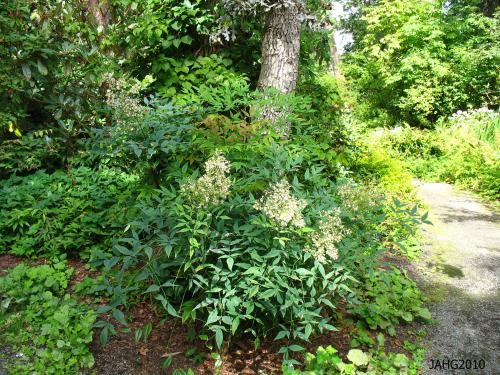
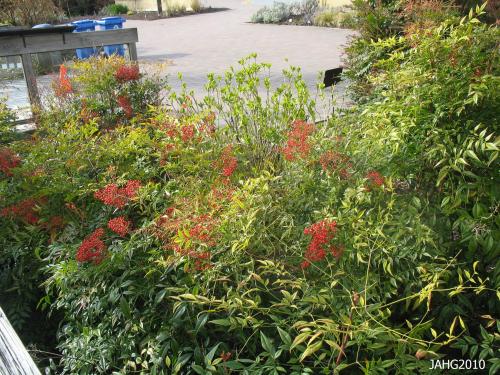
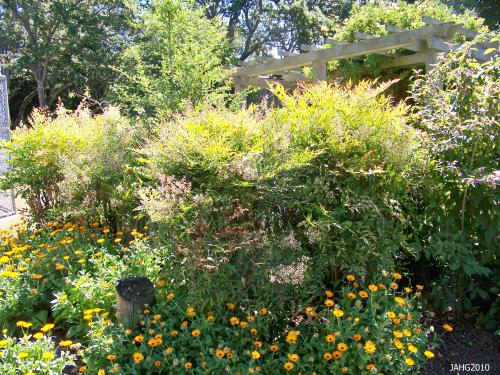
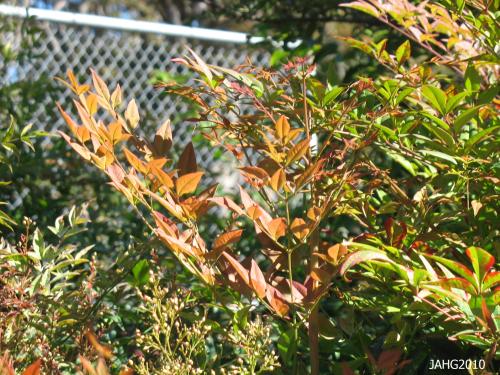
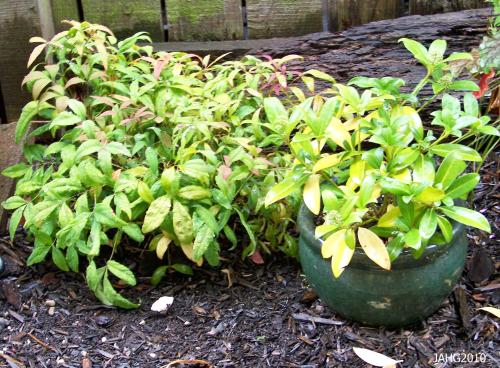
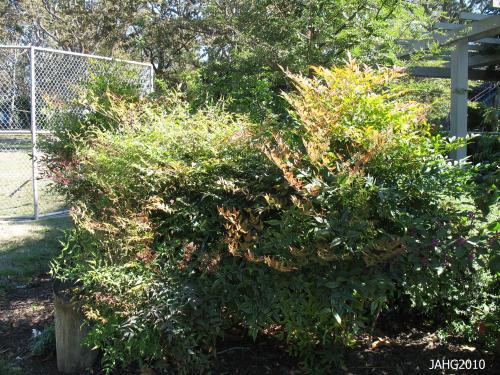







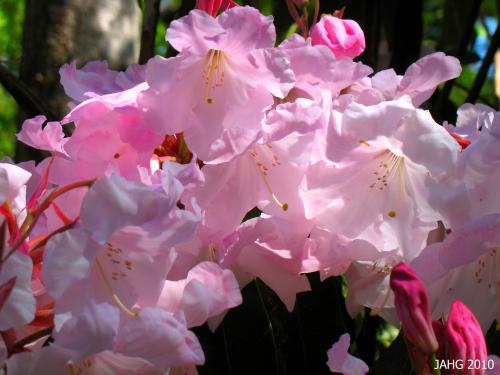















 Stumble It!
Stumble It!






